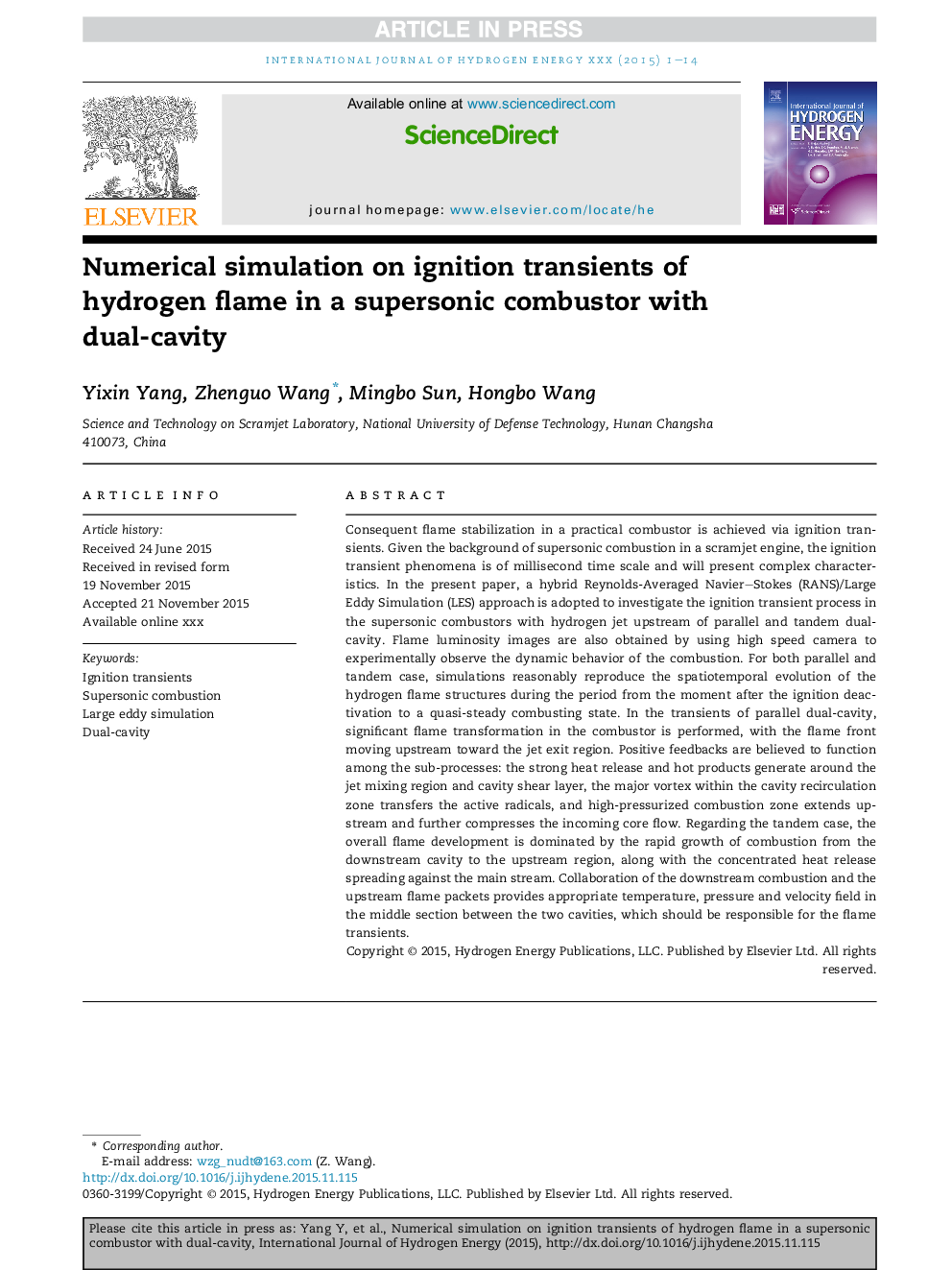| کد مقاله | کد نشریه | سال انتشار | مقاله انگلیسی | نسخه تمام متن |
|---|---|---|---|---|
| 7713028 | 1497424 | 2016 | 14 صفحه PDF | دانلود رایگان |
عنوان انگلیسی مقاله ISI
Numerical simulation on ignition transients of hydrogen flame in a supersonic combustor with dual-cavity
ترجمه فارسی عنوان
شبیه سازی عددی در گذرهای احتراق شعله هیدروژن در یک آتش سوزی با دو حفره
دانلود مقاله + سفارش ترجمه
دانلود مقاله ISI انگلیسی
رایگان برای ایرانیان
کلمات کلیدی
پرتوهای جرقه زنی احتراق فوق العاده، شبیه سازی گردابی بزرگ، دو حفره،
موضوعات مرتبط
مهندسی و علوم پایه
شیمی
الکتروشیمی
چکیده انگلیسی
Consequent flame stabilization in a practical combustor is achieved via ignition transients. Given the background of supersonic combustion in a scramjet engine, the ignition transient phenomena is of millisecond time scale and will present complex characteristics. In the present paper, a hybrid Reynolds-Averaged Navier-Stokes (RANS)/Large Eddy Simulation (LES) approach is adopted to investigate the ignition transient process in the supersonic combustors with hydrogen jet upstream of parallel and tandem dual-cavity. Flame luminosity images are also obtained by using high speed camera to experimentally observe the dynamic behavior of the combustion. For both parallel and tandem case, simulations reasonably reproduce the spatiotemporal evolution of the hydrogen flame structures during the period from the moment after the ignition deactivation to a quasi-steady combusting state. In the transients of parallel dual-cavity, significant flame transformation in the combustor is performed, with the flame front moving upstream toward the jet exit region. Positive feedbacks are believed to function among the sub-processes: the strong heat release and hot products generate around the jet mixing region and cavity shear layer, the major vortex within the cavity recirculation zone transfers the active radicals, and high-pressurized combustion zone extends upstream and further compresses the incoming core flow. Regarding the tandem case, the overall flame development is dominated by the rapid growth of combustion from the downstream cavity to the upstream region, along with the concentrated heat release spreading against the main stream. Collaboration of the downstream combustion and the upstream flame packets provides appropriate temperature, pressure and velocity field in the middle section between the two cavities, which should be responsible for the flame transients.
ناشر
Database: Elsevier - ScienceDirect (ساینس دایرکت)
Journal: International Journal of Hydrogen Energy - Volume 41, Issue 1, 5 January 2016, Pages 690-703
Journal: International Journal of Hydrogen Energy - Volume 41, Issue 1, 5 January 2016, Pages 690-703
نویسندگان
Yixin Yang, Zhenguo Wang, Mingbo Sun, Hongbo Wang,
